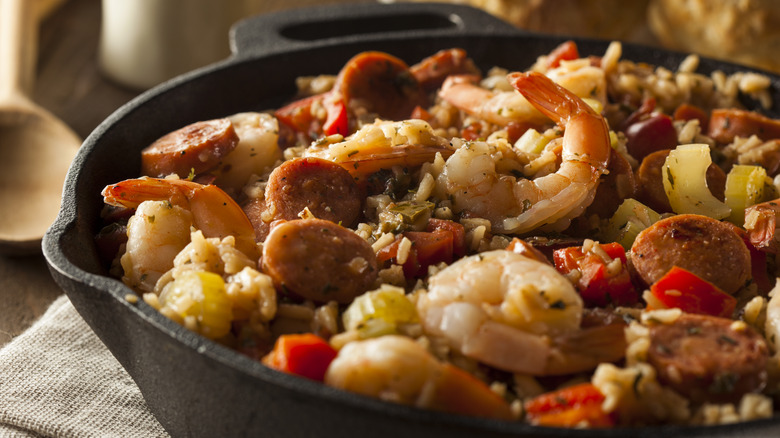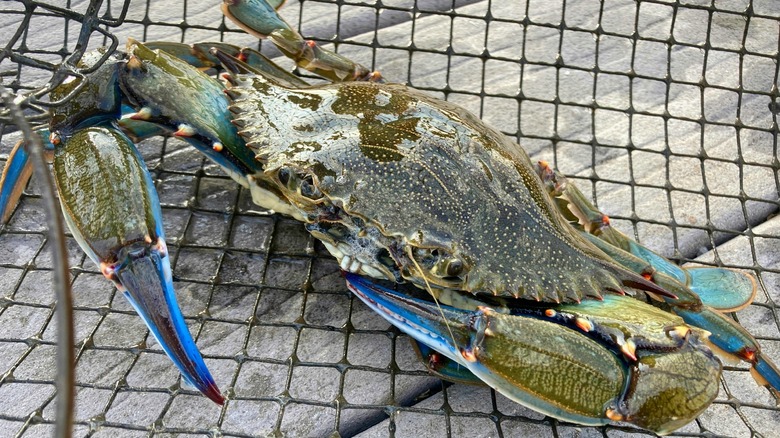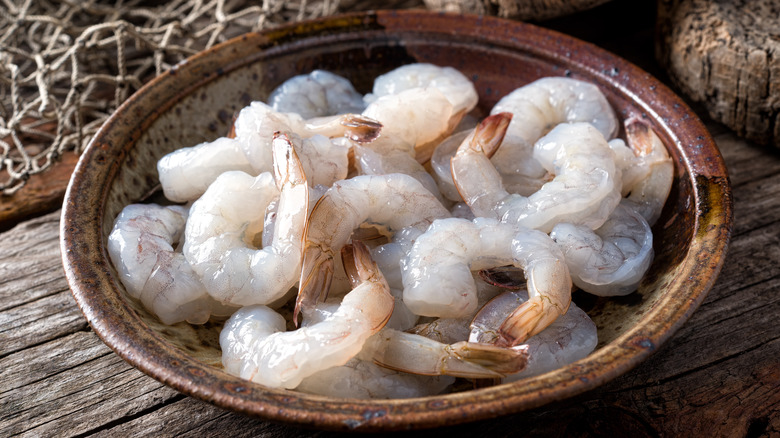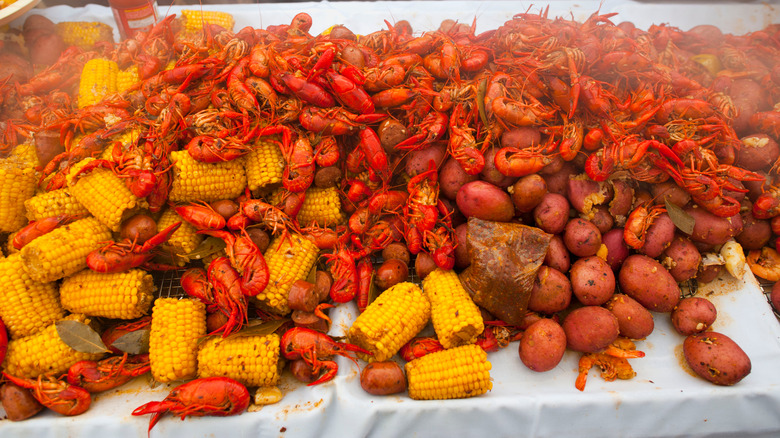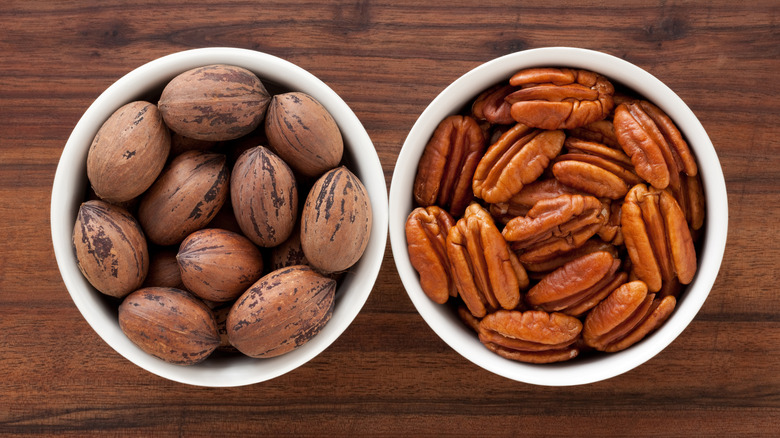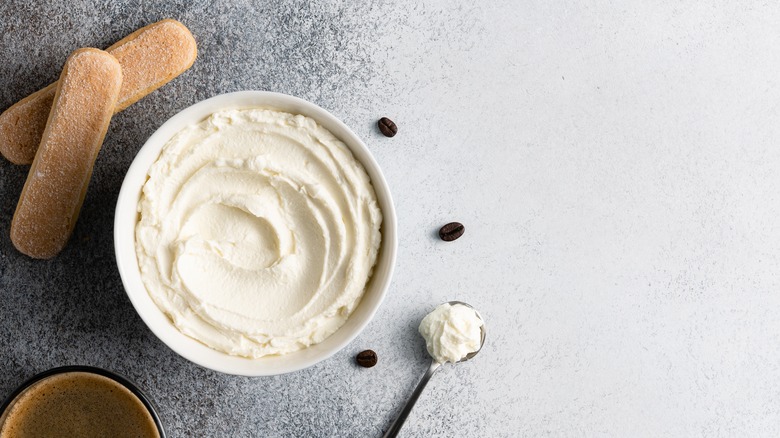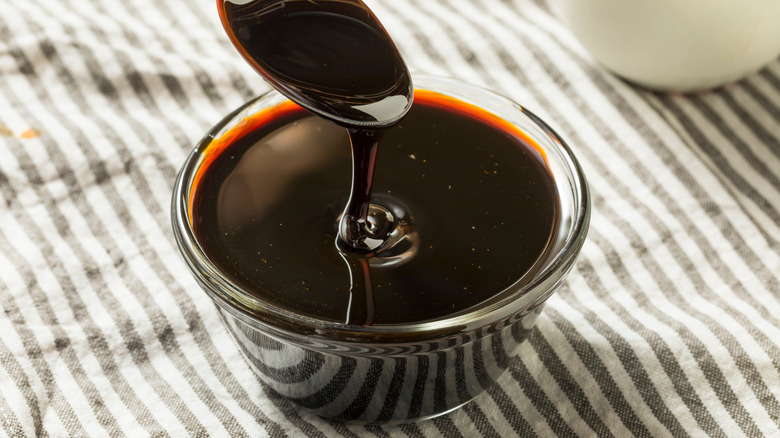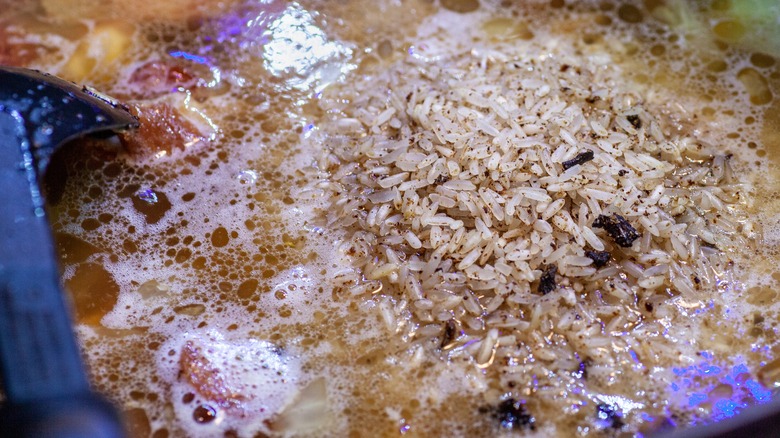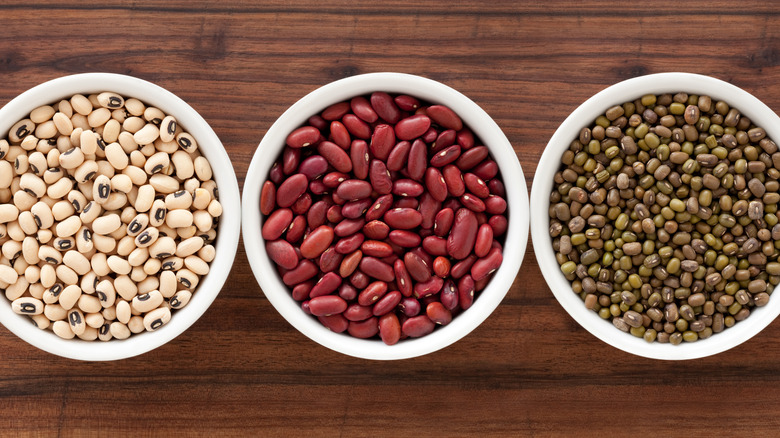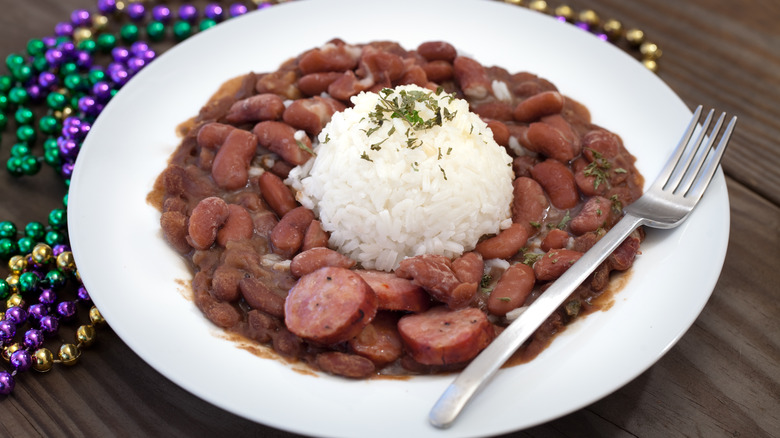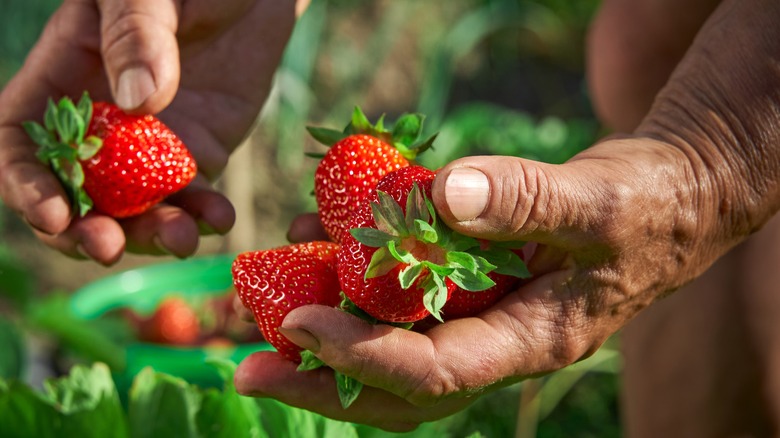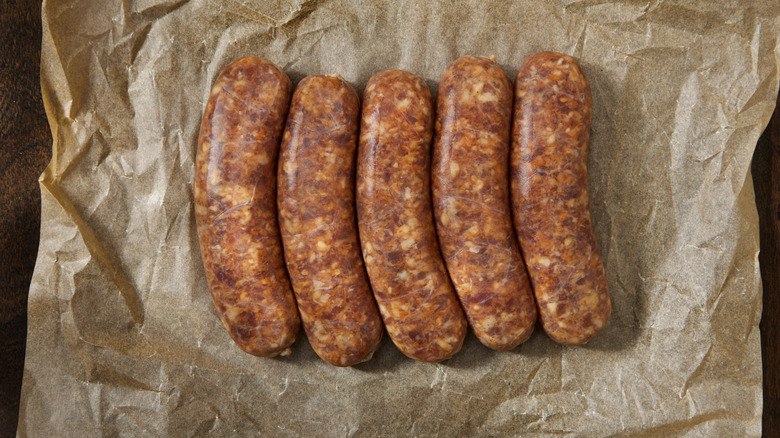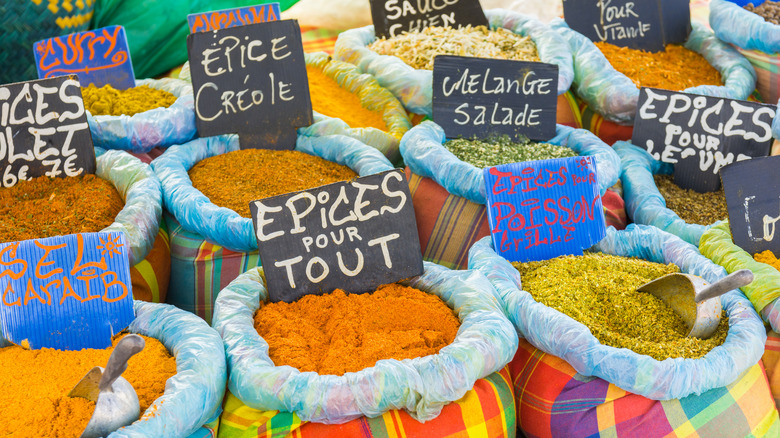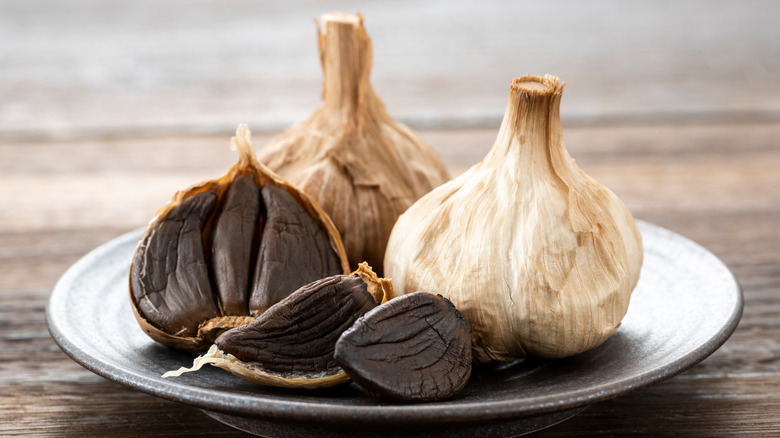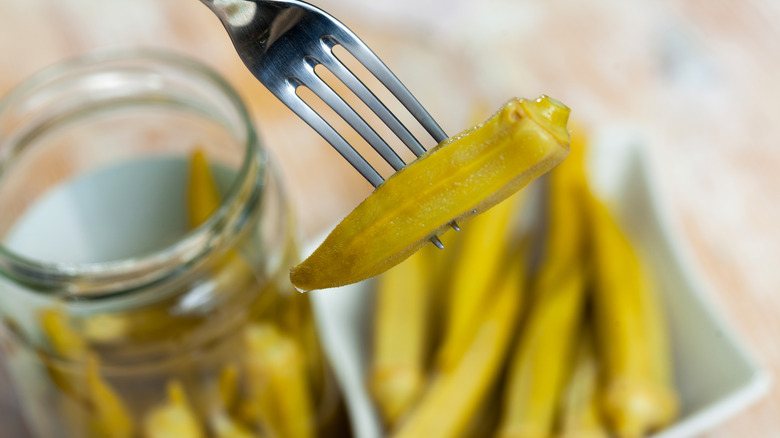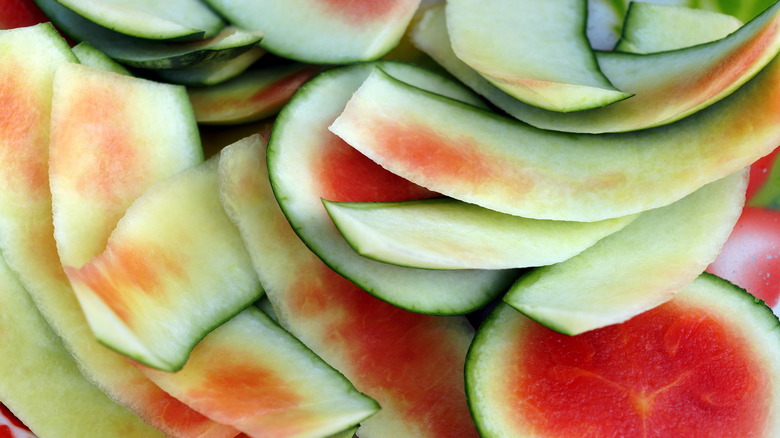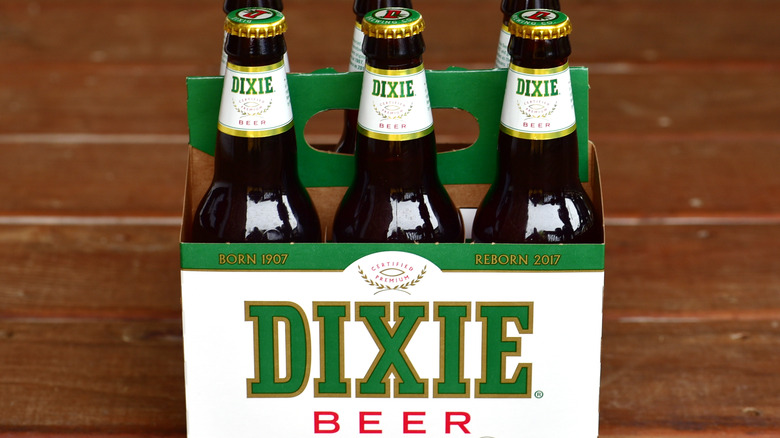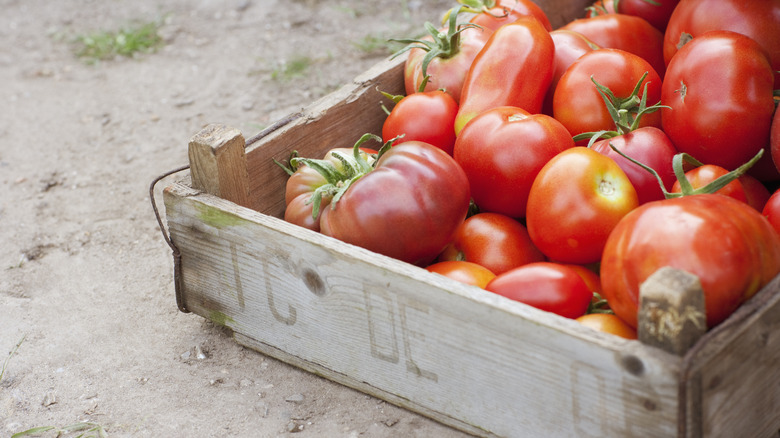17 Essential Cajun Ingredients, Explained
When you think of Cajun food, you probably think of New Orleans favorites like jambalaya, crawfish, and blackened chicken spiced with Cajun or Creole seasonings. There's an undeniable flavor associated with the down-home foods that are unique to Louisiana — a distinct combination of Southern and French cuisines married together when French settlers traveled down the Mississippi River from Canada to settle in the Bayou State.
The cultural history of Cajun cuisine and its use of local ingredients that are found specifically in Louisiana can make it somewhat difficult to replicate Cajun flavors at home if you don't live in the area. That said, if you understand which ingredients help make Cajun dishes shine, it'll be easier to find and use ingredients that are close, if not exactly, the same as what's used by chefs at some of the most popular restaurants in New Orleans. Here, Executive Chef Meg Bickford from Commander's Palace and Executive Chef Phillip Lopez from Galatoire's Restaurant share their insights on the essential ingredients that make their signature Cajun dishes shine.
Blue crab
Cajun dishes are largely rooted in ingredients that are readily sourced from Louisiana's fields, shores, and waterways, so given New Orleans' proximity to the Gulf of Mexico, it should come as no surprise that seafood takes a prominent position in Cajun favorites. Bickford specifically points to blue crab as a must-have in her kitchen, stating that it's her favorite seafood to cook and eat. "We have some of the best seafood in the world and this ingredient is at the top of that list. Louisiana blue crabs are the best, sweet, delicate, beautiful white meat," she says.
There are lots of ways to enjoy blue crab in Cajun dishes, but it's hard to go wrong with a hearty seafood gumbo or a classic crab boil. Just be sure to brush up on some of the common mistakes people make when cooking crab to help ensure your homemade Cajun meals come out tasting their best.
Wild white shrimp
Wild white shrimp is another seafood favorite sourced from the Gulf, and its abundance is one of the reasons it's so important to Cajun cooking. "The absolute abundance of white shrimp in the gulf makes it a critical ingredient to south Louisiana," says Bickford. But that's not the only reason — it's an affordable option, too.
Considering that Cajun cuisine rose out of settlers' need to cook with available ingredients, and many native Louisiana residents continue to hunt, fish, and garden to help supplement their grocery runs, the availability and affordability of the area's white shrimp are important to the roots of the dishes. Like crab, white shrimp often shows up in seafood gumbos and jambalaya, but simple Cajun shrimp and rice or Cajun shrimp pasta are other popular ways to enjoy the shellfish.
Breaux Bridge crawfish
Crawfish boils are quintessentially Louisianan, and there's no better crawfish than Breaux Bridge crawfish, according to Bickford. These fresh-water crustaceans that look like little lobsters but have a flavor more akin to shrimp are one of Louisiana's claims to fame. And of all the crawfish in all of Louisiana? Those from Breaux Bridge are particularly famous, as this locale has been dubbed by Louisiana as the "Crawfish Capital of the World."
But Bickford points out that this ingredient is also seasonal, which helps add to the festivities when crawfish come in season."This seasonal ingredient is so widely celebrated, it's unique and absolutely delicious. It is an ingredient, but to most folks in south Louisiana, it is also an event. The gathering around crawfish boils is so important to our celebratory culture," she says. And here's the thing: You don't have to live in Louisiana to take advantage of the flavorful crustacean — the Louisiana Crawfish Co. will deliver live crawfish straight to your door.
New Roads pecans
You may not think of pecans when you think "Cajun food," but just as crawfish and white shrimp are important Cajun ingredients due to their local availability, pecans are, too. Bickford points specifically to New Roads pecans (those sourced near New Roads, Louisiana by companies like Bergeron Pecans) as her favorite options. For many Louisiana people, pecans aren't just delicious in pies, pralines, and Cajun versions of Cracker Jacks, but they're little pieces of nostalgia.
"[Pecans are a] critical economical crop for our state. [They're] delicious and versatile," Bickford says. But really, her love for the ingredient has deeper roots. "I used to pick the pecans that fell from my grandmother's pecan tree. [I have] wonderful memories of collecting, shelling, and cooking pies, pralines, and sweets with them," she recounts.
Creole cream cheese
If you haven't heard of Creole cream cheese, that's likely because the food was almost extinct until the late Commander's Palace owner, Ella Brennan, helped revive it along with other chefs invested in maintaining the heritage of the region's foods. This farmer's cheese has a unique, slightly sweet flavor and a yogurt-like texture, and can be served with fruit and sugar for breakfast, or can be made into other popular New Orleans-based desserts like Creole cream cheesecake and Creole cream cheese ice cream.
"[It's] unique to our region [with a] unique flavor, tang, and texture," Bickford says. "[It's] an ingredient that I'm focused on creating a truly versatile demand for to never lose again. It's used in sweet and savory applications. At Commander's, we make our own and use it all over the menu from the cheesecake to stone ground grits."
Sugarcane syrup
"Driving through south Louisiana the sugarcane fields are vast. Another important economical crop from sugar refineries to small batch syrup makers, sugarcane is very important to us," Bickford explains. Sugarcane syrup is one of the foods created when refining sugarcane. Just keep in mind that sugarcane syrup is different from syrup made from maple. It's closer in color and flavor to molasses but is less bitter and a little less viscous — it has a consistency closer to maple syrup.
It can be used on and in foods just as regular syrup, but the deeper flavor offers a unique, Louisianan experience. For native Louisiana folks, it also likely imparts feelings of nostalgia. "As a child, we used to chew on raw sugarcane as a treat, and [we] use the syrup in desserts, or just over beignets for breakfast," Bickford says.
Dark roux
Bickford calls dark roux one of the "key building blocks" to Louisiana's regional cuisines, playing a role in Cajun and Creole dishes. The role of a roux is to help thicken sauces, stews, and soups, but Bickford says the dark roux is particularly important. "The dark roux adds more to our food than just thickening qualities. The deep, complex flavors that are achieved in cooking a proper dark roux provide the depth and complexity that so many of our staple dishes are known for," she explains.
Roux itself is typically made by combining flour and butter, although other fats like oil, bacon grease, or lard can be used. These ingredients are cooked (while stirring constantly) over low heat for up to 45 minutes. The longer it cooks, the darker the roux, and the more complex the flavors. That being said, the longer it cooks, the less thickening power the roux ends up having. This makes dark roux perfect for dishes like jambalaya and gumbo, where intense flavors are important, but thickening plays a secondary role.
Red beans and field peas
Like so many regions and cultures that rely on beans as a staple ingredient in popular dishes, Cajun food is no different. And in this case, beans extend from the red beans made popular in red beans and rice, to field peas. If you're unfamiliar with this group of legumes, field peas are typically grown in Southern regions and include black-eyed peas, but also encompass a wide range of other beans or peas that grow in pods.
Like many of the other ingredients in Cajun cooking, Bickford again mentions that affordability plays an important role in why red beans and field peas are ubiquitous in Cajun cooking. "[They] have fed so many for generations," she says. In addition to red beans and rice, popular dishes include collard greens and field peas, and Cajun black-eyed peas.
Popcorn rice
As Bickford points out, "[You] can't have red beans without rice." And the importance of rice to Cajun cooking doesn't stop with the namesake dish. Rather, rice is found in a wide range of Cajun favorites from jambalaya and gumbo to Cajun dirty rice with sausage, shrimp, or chicken.
Of course, there are many different types of rice, and most can be used when making Cajun food, but Bickford points specifically to popcorn rice as her favorite to use in Cajun cuisine. This basmati rice hybrid is grown specifically in Louisiana and is considered an artisan grain with a unique, nutty, and popcorn-like aroma when it's cooked. This lends greater depth and flavor to the popular Cajun dishes that rely on rice as their cornerstone.
Ponchatoula strawberries
Strawberries are another ingredient that you may think don't scream "Cajun," but Louisiana-native Ponchatoula strawberries from the city of the same name are renowned for their sweetness. In fact, the locale is known as "the strawberry capital of the world," and is host to the annual Ponchatoula Strawberry Festival. It's here that you can taste some of the best strawberry recipes, including strawberry shortcake and deep-fried strawberries, which are dipped in beignet batter before being deep-fried.
Bickford calls these berries the "best in the world," and in addition to making great additions to popular desserts like shortcake and cheesecake, they make excellent toppings for beignets and even Creole cream cheese. They're also excellent for including in fresh, sweet salsas, fruit kabobs, and alcoholic beverages.
Cured and smoked pork products
Sausage is certainly one of the most popular and important ingredients in Cajun cooking, but it's not the only cured or smoked pork product to make a regular appearance in spicy cuisine. Bickford points to Andouille sausage, tasso ham, cracklins, and hogshead cheese as all playing a role in the Southern dishes.
"As the Acadians descended on South Louisiana, they lived off the land. What we are left with today is so much of what they made from that. Boucheries, the celebration of the killing and cooking of whole hogs, are still a big part of the culture of Cajuns," she says. "The use of the whole animal is an idea that should be cherished and exercised. Cajuns take from the land with respect."
House made Creole spice
If you've ever eaten Cajun or Creole cuisine, you know that what sets these dishes apart from other types of food is their quintessential spice. Galatoire's Executive Chef Phillip Lopez emphasizes the importance of prioritizing a house-made Creole spice to ensure the right flavor profiles. "This fundamental seasoning bridges Creole and Cajun cuisine in south Louisiana," he says.
Creole seasoning typically includes garlic and onion powder, paprika, salt, pepper, cayenne pepper, and other herbs like thyme, oregano, basil, rosemary, and bay leaf. Creole seasoning tends to be slightly heavier on the herbs than a Cajun blend, which tends to bring the heat a little more. That said, the differences are subtle, which is why a house-made variety that's blended to the chef's (or home chef's) personal preference is so ideal.
Fermented black garlic
If you haven't heard of black garlic, it's really just regular garlic that's gone through a fermenting process. "The transformation that happens when black garlic is fermented is the perfect union of smokiness and umami for all Cajun cuisine, even though it's not traditionally Cajun," says Lopez. In this manner, practically any Cajun dish that includes garlic (read: most of them) could benefit from the addition of black garlic, too.
One thing to keep in mind is that black garlic doesn't taste as sharp or strong as standard garlic. It has a more subtle and sweet flavor profile and even has some tang and smokiness to it. This makes it a good spice to experiment with, adding it to different dishes or even using it in spreads or in oils.
Pickled okra
Okra is a vegetable that loves growing in hot climates which makes Louisiana's hot and humid summers the perfect environment for the seedy green veggie. As such, this Southern staple is also a staple in many Cajun dishes. "Okra or pickled okra is undoubtedly the architect of any good gumbo base and you can't have a Cajun dish without Creole ingredients," Lopez says.
While some people dislike okra for its slimy consistency when cooked, the vegetable has a mild flavor and features many seeds that offer a slight crunch. When using pickled okra in Cajun dishes, the veggie also lends a slight tang, thanks to the vinegar used to ferment the okra. And if you're pickling okra at home, you may even be able to maximize the crunch and minimize the slime for a particularly enjoyable addition to your Cajun meals.
Watermelon rinds
Watermelon rinds may not seem like an ingredient to be used in cooking... the white and green parts of the watermelon are what you're supposed to discard, right? Not so, according to Lopez. "South Louisiana is hot in temperature and hot in flavor when it comes to our spices, and watermelon rinds are a great way to cool your body and your palette down," he says.
Given that watermelon grows in abundance in the Southern state, when watermelon is in season, watermelon rind dishes are, too. Watermelon rind can actually be pickled, juiced, or even cooked up like veggies when sliced into smaller pieces. Pickled watermelon rind can also be spiced to Cajun specifications to make watermelon rind relish or chutney to layer on top of other dishes.
Local beer
Regional cuisines always taste better when paired with regional beverages. Even if there's nothing to prove this is actually true, simply knowing you're supporting the local economy for your whole meal is bound to make you feel good about the whole experience. And Lopez emphasizes that the social side of Cajun and Creole cooking lends itself to pairing the food with a good, local beer.
"Cajun/Creole food is predominantly cooked in social gatherings, and a great local beer is needed to wash our delicious food down," he says. But the importance doesn't stop as a drink pairing. Rather, Lopez likes to use the local beers as an ingredient, too. "It tastes great in étouffee and gumbo," he says. We're also fans of it in dirty rice.
Creole tomatoes
Cajun foods tend to be a little lighter on tomatoes than Creole dishes, but there's so much interplay between the two cuisines that tomatoes are a must-have whenever cooking either variety. And if you're trying to keep your ingredient list as true to the original as possible, Lopez says it's important to cook with Creole tomatoes. "You can't cook Cajun food without Creole influence, and vice-versa. Creole tomatoes are just as fundamental as okra, and when the season is ripe in South Louisiana, they need to be celebrated for their sweetness and acidity," he says.
Here's the thing, though: Creole tomatoes aren't a specific variety of tomatoes. Rather, "Creole" refers to where they're grown. These medium and large-sized red, vine-ripened tomatoes are marketed as "Creole" to help people identify the locally grown tomatoes from the Southern Louisiana parishes versus those shipped into the area from farms located farther away. In this manner, if you don't live in South Louisiana, it may be hard to find true Creole tomatoes, but the Celebrity variety is likely to be a close match for the flavor.
Static Media owns and operates Tasting Table, Mashed, and The Daily Meal.
